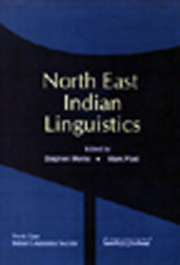Book contents
- Frontmatter
- Contents
- Introduction
- Foreword
- Phonology
- Lexicon
- 5 Lexicon in a Contact Language: The Case of Bishnupriya
- 6 Shafer's ‘parallels’ between Khasi and Sino-Tibetan
- 7 An Exploratory Study of the Terms of Relationship in Khamti of Lohit district in Arunachal Pradesh
- 8 Verbs of Position, Existence, Location and Possession and their Grammaticalization Pathways in the Tani Languages
- Morphology, Syntax, and Semantics
- Language Description and Language Endangerment
7 - An Exploratory Study of the Terms of Relationship in Khamti of Lohit district in Arunachal Pradesh
from Lexicon
Published online by Cambridge University Press: 26 October 2011
- Frontmatter
- Contents
- Introduction
- Foreword
- Phonology
- Lexicon
- 5 Lexicon in a Contact Language: The Case of Bishnupriya
- 6 Shafer's ‘parallels’ between Khasi and Sino-Tibetan
- 7 An Exploratory Study of the Terms of Relationship in Khamti of Lohit district in Arunachal Pradesh
- 8 Verbs of Position, Existence, Location and Possession and their Grammaticalization Pathways in the Tani Languages
- Morphology, Syntax, and Semantics
- Language Description and Language Endangerment
Summary
Introduction
This study presents an analysis of the Terms of Relationship (TOR), or Kinship terms as used in Khamti or Tai-Khamti (T-Kh) which is spoken in the Lohit district of Arunachal Pradesh. The Tai languages form one branch of the Tai-Kadai family, which also includes Thai (the language of Thailand), Lao, the Shan language of Myanmar and Zhuang of Southern China. The Tai languages found in India are Phake, Aiton, Khamti, Khamyang and Tuning (which has lost its linguistic identity and now speaks Singpho). Together, they form part of the Northwestern subgroup of the Tai languages. Khamti is one of the largest among the Tai languages still spoken in India. The only other place where Khamti is spoken is Myanmar. The speakers are mainly concentrated in Lohit district of Arunachal Pradesh. Khamti accounts for about 85% of the total Tai population found in India. Today, of the total estimated population of Khamti speakers in India (more than 6000), more than 93% of the Khamti speakers are concentrated in Lohit District of Arunachal Pradesh alone.
Earlier works
The existing studies on Khamti include comparative vocabulary/wordlists and grammatical sketches (Robinson 1849, Hodgson 1850, Needham 1894, Grierson 1903, Harris 1976, Weidert 1977), primers (cf. Manpoong 1993) and other works on people and society (Gogoi 1971, Konwar 2002, Tun 2004, etc).
Scope and limitations of the paper
The main objectives of the paper concern synchronic investigation of the terms of relationship as used in Khamti spoken in Lohit district of Arunachal Pradesh. Wherever possible, the Proto Tai (PT) forms3 along with their tone markings corresponding to Khamti terms of relationships are provided for the sake of comparison.
- Type
- Chapter
- Information
- North East Indian Linguistics , pp. 105 - 126Publisher: Foundation BooksPrint publication year: 2008



